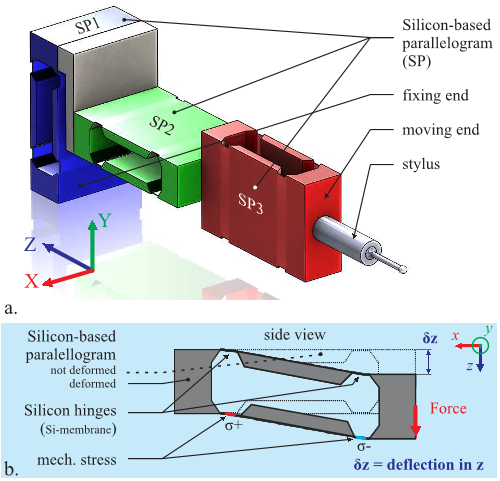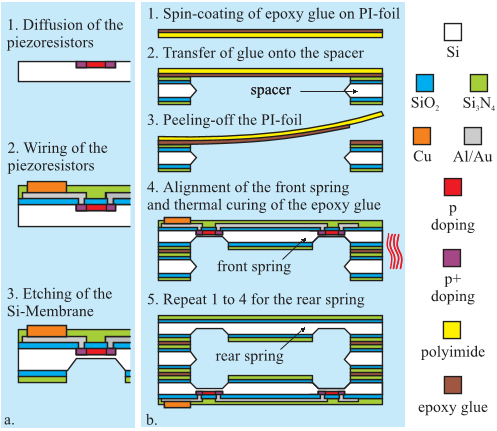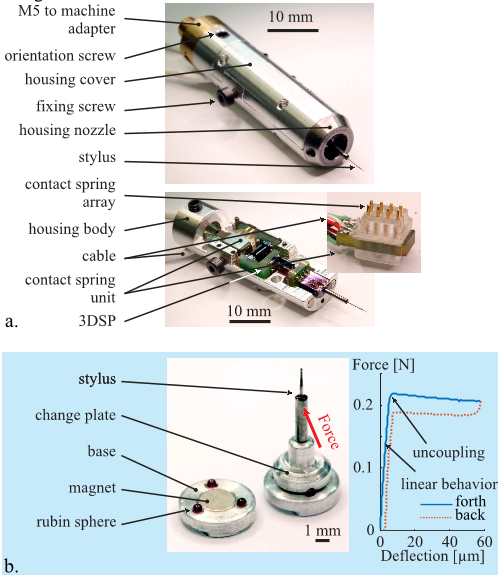Abstract: The development of pressure sensors of high sensitivity and stable robustness over a broad range is indispensable for the future progress of electronic skin applicable to the detection of normal and shear pressures of various dynamic human motions. Herein, we present a flexible capacitive tactile sensing array that incorporates a porous dielectric layer with micro-patterned structures on the surface to enable the sensitive detection of normal and shear pressures. The proposed sensing array showed great pressure-sensing performance in the experiments, with a broad sensing range from several kPa to 150 kPa of normal pressure and 20 kPa of shear pressure. Sensitivities of 0.54%/kPa at 10 kPa and below, 0.45%/kPa between 10 kPa and 80 kPa, and 0.12%/kPa at 80 kPa and above were achieved for normal pressures. Meanwhile, for shear pressures, sensitivities up to 1.14%/kPa and 1.08%/kPa in x and y directions, respectively, and below 10 kPa, 0.73%/kPa, and 0.75%/kPa under shear pressure over 10 kPa were also validated. The performance of the finger-attached sensing array was also demonstrated, demonstrating which was a potential electronic skin to use in all kinds of wearable devices, including prosthetic hands, surgical robots, and other pressure monitoring systems.




















